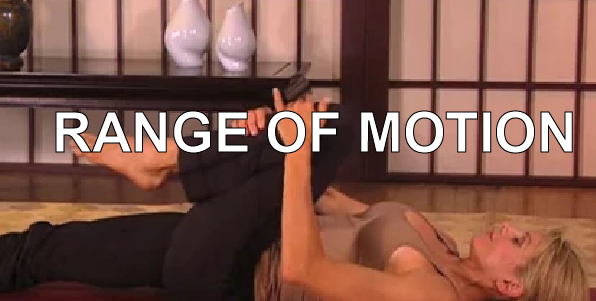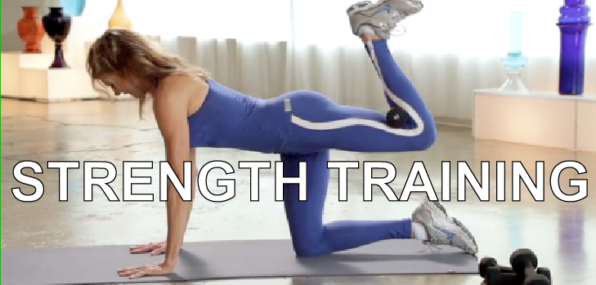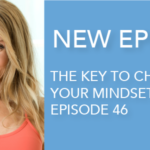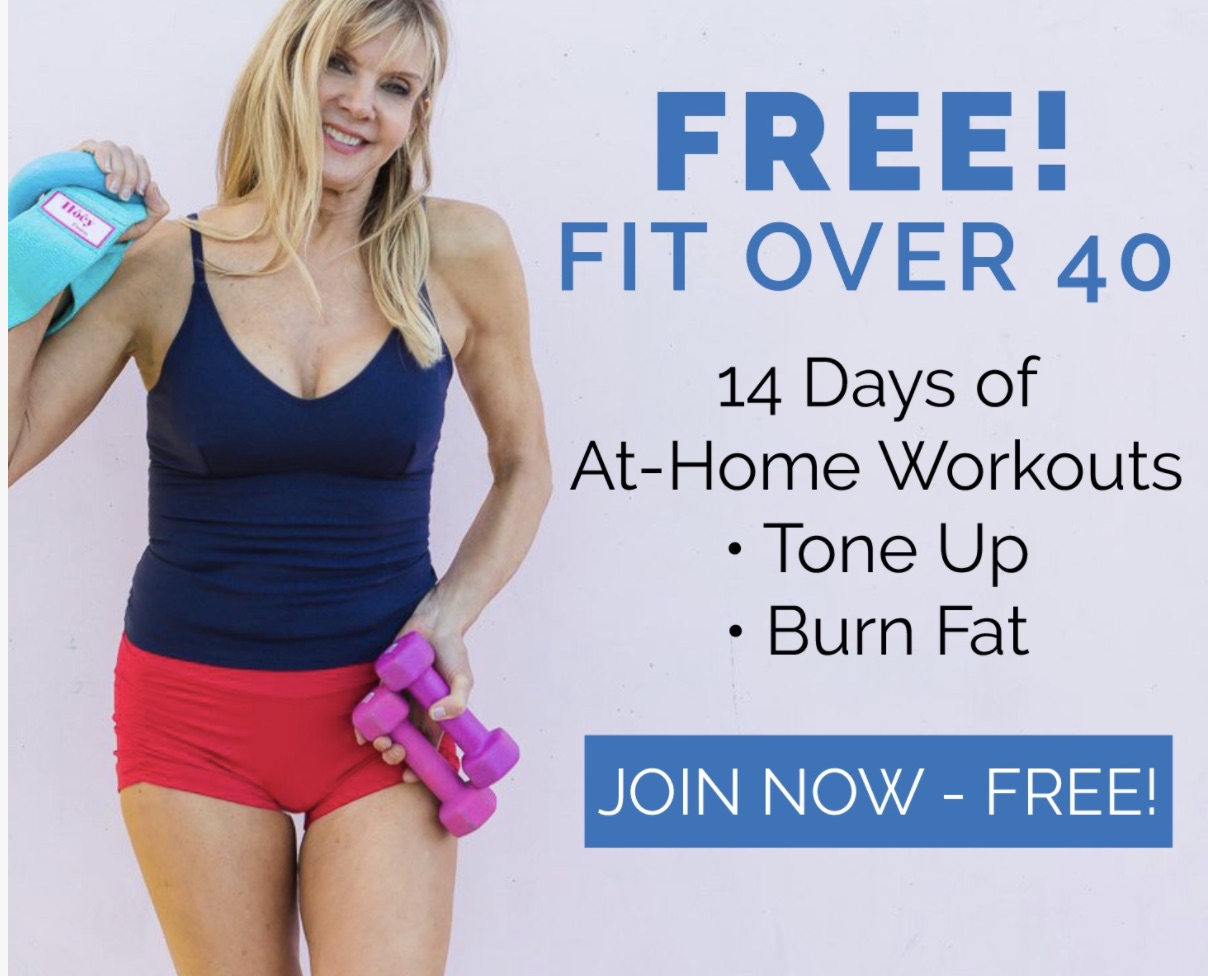Episode 64 | Kathy Smith | Where Your Focus Goes, Energy Flows!
To Listen, Just Click Play!
This time of year, there’s a lot to be grateful for. Thanksgiving is a chance for family and friends to gather together, enjoy each other’s company, celebrate traditions, and feast on holiday foods.
But, the pressure of hosting family members can be stressful. Often, you have too much to do and not enough time to do it. And that can turn your holiday fun into a holiday mess!
On the podcast today, I want to share with you a technique that I learned early in my career for shifting my mindset from negative thinking to a more positive outlook.
Learning how to shift focus can be a game changer…whether it’s in your career, relationship, or in Thanksgiving week.
In this episode, you’ll discover…
• Keys to feel more focused, balanced and calm in any situation
• Tricks to achieving extraordinary results and fulfillment in life
• Optimal ways to find passion and energy
Subscribe To On Health: The Art of Living
Follow Along With The Transcript
Hi. I’m Kathy Smith. Welcome to On Health: The Art of Living where I bring you the latest information on how to live a healthier, more vibrant, more passion-driven life.
Many times, when I’m at a dinner party, I’ll be sitting next to somebody and we start chatting about what we both do. When I tell them that I’m in the fitness business, their first question is always, “Kathy, how did you get started?”
Today, I want to use that question as a springboard to tell you about my story, how I got where I am today. But more importantly, some of the big lessons I learned along the way. It’s what I call my game changers. These are principles that have helped shape my career as I look back over the years.
They’ve also helped shape my life, my viewpoints, the way that I approach my life. Sometimes a game changer is a defining moment, and other times, it’s a way of looking at life that just has served me well and made my life better.
So my hope is that when you finish listening to this podcast, you might have a few nuggets that will help re-ignite your energy and help you develop a clearer vision of what you want both personally and professionally.
Let’s get started. I was raised a military brat. What that means is my father was stationed all around the world. We were in Sao Paolo, Brazil, we were in Mobile, Alabama, San Angelo, Texas, Hawaii, Illinois. The thing is, growing up, I never spent more than three years in one place. It was this sort of rootless existence, but I got used to adapting. I kind of got a thrill out of going to a new place and making new friends. Even though it was sad leaving my old friends and my old house, it was always an adventure.
Then in my last two years of high school, we moved to Belleville, Illinois. And three days before my high school graduation, my dad had a heart attack. Remember, my dad was in the military. He was an air force pilot, and he had quite a sense of humor. So he was in a debriefing where he was talking about the latest trip he was on to his coworkers. When he fell down, everybody thought it was kind of a joke, that Carl was playing around. But it was no joke.
They called an ambulance, they rushed him to the hospital. But before he got to the hospital, he had passed away of a massive heart attack. It was such a shock, and it rocked my foundation to the core. Literally, in that one day, my life changed forever.
Then shortly after that, on a winter’s night, my mom and my stepdad were returning to Wisconsin from Illinois in one of my stepdad’s planes. That particular plane had pontoons on it for landing on water. Wisconsin has all these great lakes, and during the summer, people like to take their planes and land on the water and maybe fish a little bit or swim a little bit. But you’re supposed to take your pontoons off during the winter.
My stepdad hadn’t done that yet, so when they were flying back, the pontoons froze up, made the plane unstable, so they had to land in a farmer’s field. When they touched ground, the plane flipped over, burst into flames, and both of them were killed that evening.
So here I was, in two short years, I’d lost my dad, I’d lost mom, and I’d lost my stepdad. I found out about it from my aunt who had called when I was in Hawaii. I remember screaming into the phone, “Why is this happening to me? Why is it happening? I don’t know what I’m going to do with my life.”
I ran outside, I sat on the curb, and I was crying hysterically, and remember thinking, “Why plan for the future when it can be over just so suddenly?”
You have to remember also, this was in 1971. I was only 19 years old at the time, and America was in a state of revolution on so many fronts. There was the Vietnam War, the sexual revolution, women’s lib, drugs, the English Invasion when it came to music, and Woodstock. So people of all ages were kind of gleefully running from their parents to start adventures and have some fun. And there I was, sitting on a curb weeping, just having been orphaned, completely and utterly alone.
Something like that really shapes you. In many ways, it shaped my success because you do one of two things. You either go under and crumble in a situation like that, perhaps turn to drugs, drinking, alcohol. You try to escape from it or you find a way to succeed. Life has a really strange way that turns us onto paths that we’re meant to be on.
Way down, with all this grief and anxiety, I began to accompany my then boyfriend, who was a football player, on his daily runs. I wasn’t a runner. I just didn’t want to be alone. I didn’t want to feel lonely and abandoned. So I started going with him and I would run a lap, then rest while he ran a few more laps.
I started linking those laps together so it was a quarter mile, eventually a half mile, and then a mile. I would come back from these runs, and I would feel so much better. The depression, the sadness, the confusion started to lift.
Running saved my life. It’s then that I made this connection between exercise and emotions. I went from the state of being comatose – feeling completely out of it – to one day feeling like, “Okay. I’m going to be okay. I’m going to make it.”
That was a major revelation to me – understanding that what you do with your body affect your mind and your well-being. The fact is that in the 70s, nobody was really making that connection. We weren’t throwing around words like serotonin and dopamine. But I knew in my gut, and more importantly, in my brain, that getting up and moving my body improved my coping mechanisms, and it was literally a key to my survival. That was the real light bulb moment. It was so important to me to find this passion.
You see, when it comes to success, it’s not about just having a great idea. It’s the willingness to work hard, really hard, to make an idea a reality. When you’re passionate about something, that process of all that blood, sweat, and tears is so much easier, and you can do things you didn’t even think you could do, that you couldn’t even imagine you could do.
A person can’t fake passion. Remember, when you’re passionate, you’re willing to get up, get the job done, whatever it takes. And that’s, honestly, what I found to be one of the biggest keys to success – having passion and having a very powerful why, which I’ll explain in a minute what I mean by that.
But when you have a very strong reason, a powerful reason for doing something, you get very passionate about it. The reason why I was out there running was because I needed to survive. It wasn’t because I needed to lose a few pounds or wanted to tone up my legs. Running saved my life and it changed my focus. I, then, wanted to communicate that feeling to the rest of the world.
I know each and every one of you have passion. We all have it. Passion is what gets you out of bed in the morning and gets you riled up. It’s the stuff that you actually want to do, not the stuff that you need to do or you have to do.
Remember, when you first fell in love. Remember that feeling where you had found this energy? You couldn’t even sleep, you were so excited. You couldn’t wait to see each other. You couldn’t really eat. You were just packed with ideas.
If you have an idea and you’re not passionate from the start, you’re never going to stick with it. As you get excited, you build momentum. That’s the reason why, as you accomplish something and you build momentum, that it breeds more success. You can accomplish anything you want if you have a very powerful why.
Let me explain what that means. I think the best definition or story that I’ve heard about this concept of why was told by Darren Hardy at The Idea Convention a few months ago.
Here’s the story. Imagine there’s a balance beam and it’s four inches wide, six inches high, and 100 feet long. If I asked you to come up to me and walk from one end of the balance beam to the other, I’d imagine most of you out there would all do it. After all, what could go wrong? It’s only four inches high. If you haven’t been doing your balance exercises or your bolster exercises, you’ll step off the balance beam. No big deal.
Now, what if I hung the balance beam and I took that four-inch wide balance beam and strung it between two skyscrapers, and those skyscrapers were 15 stories high, and I asked you to walk across from one building to the other. You’d probably look at me and hopefully if you’re sane, you’d probably say, “Kathy, you’re out of your mind.” And I could see why. That’s very risky and scary.
What if I told you though – you’re standing on one building – but on the other side where the other building was, there’s a fire and your child is on the top of that 15-story high skyscraper? I’m sure you wouldn’t even think twice to get on that balance beam. I don’t care if you’d have to crawl, shuffle across, kneel on it, hug onto it. You would do anything to get across that balance beam to save your child, because that is a powerful why.
That’s the strength of having such conviction, such a strong focus. So I encourage you to find your why in everything you do. Why do you want to exercise? Losing a few pounds is not really very powerful. Having a whole checklist of things of why you want to exercise – “Oh, it’s going to improve my bone density. It’s going to improve my lung capacity. I’ll have a better blood lipid profile. I’ll be able to manage blood sugar better. I’ll have more energy. I’ll be able to go out and play more sports.” Whatever it is, remember whether it’s in fitness, whether it’s in personal, or whether it’s in your business, whatever you dream, think about having a powerful why. Follow those dreams and go to where your passions lead you. Just get clear on what they are, and you can accomplish just about anything you want.
Let’s go back to the story now. In the 70s, Ken Cooper had coined the term aerobics, which means “with oxygen”. As he was showing heart patients how to benefit from running and from doing aerobics– back then, if a heart patient was diagnosed, he was told, “Listen. You’re not allowed to climb stairs. You can’t exert yourself. Watch getting out of bed too quickly. Don’t have vigorous sex.”
So it was at that point where we started learning that the heart is a muscle, and it needs to be strengthened. That strengthening is going to make you healthier. It just so happens there was a doctor at the time in Hawaii whose name was Dr. Scaff. And he had a group of 56 heart patients. His goal was to get them ready to run a marathon.
I would go to Kapiolani Park and listen to his lectures and train with this group. I found it interesting to hear the talks about training and nutrition. What was also interesting, you had all these runners that were healing their physically damaged hearts. There I was healing a heart that was had been drowning in grief. But it was a group that I will never ever forget.
In 1975, I ran with this group. I trained with them, I ran my first marathon. It was the Honolulu Marathon, and it really changed my life. The marathon became a metaphor for my length of my career. And I discovered what all marathon runners know, especially the slow ones. It’s not about the sprint. It’s not about how fast you’re going. It’s about being in it for the long haul.
Now, I found that out at the 18th mile when I hit the proverbial wall. The wall is that moment when you think you just can’t go any further. You can’t take another step. You’ve just got to give up. There I was trying to make it over Diamond Head, which is this big ass hill in Hawaii. It felt like a mountain. It wasn’t quite like the mountains of Utah, but it was big. At that moment, I was thinking I was just going to drop at any second.
Then somebody came running by, saw the pain that I had on my face – the despair you might say – and said to me, “Just keep putting one foot in front of the other. Just keep putting one foot in front of the other.” That’s what I did for the next eight miles. I forgot about the finish line, and I just focused on the present, the here, the now. This step, then this step, then this step. And I realized that I did have enough juice to break through the wall and to complete the marathon.
That was a light bulb moment again for me, because that’s when I realized that the wall is all in your head. And we can all do so much more than we think we can. It was another game changer for me – learning how to shift my mindset when things weren’t going right, when I was thinking I was down, when I was depressed. How do you shift your mindset? How do you get out of it?
We all hit walls every single day of our lives, which is why it’s important to shift our mindset constantly. What are these walls? I often refer to them as my itty-bitty shitty committee – the chorus of voices we all have in our heads. Those voices that tell us we’re not good enough, we’re not smart enough, we’re not thin enough, we’re simply not enough in general. And these voices slow down our progress and prevent us from following our passions.
You may have a conflicting belief system. One side of you says, “I want to do something. I want to accomplish something big.” And the other side is saying, “But I don’t want to be judged by other people.”
Now, these two sets of belief systems are in complete conflict. So if you’re trying to achieve a goal, but you simultaneously believe that you’re not strong enough or smart enough or educated enough to make it happen, you’re not going to be able to progress. So unless you uncover these inner conflicts, they’re really going to slow down your progress. It happens to everybody. You start to lose focus. Many times, it’s because you’re sitting in front of a computer or an iPhone, a laptop, a tablet. And there’s that ambient noise distracting you. It’s happening all around you every day, every minute.
I experienced something like that first hand every single day of my life. And I have a technique for shifting my focus, calming down my mind, and moving into the present time, moving out of that part of the brain that’s more reactive and shifting to the part of the brain that’s more rational. Because focusing can enable you to accomplish what you want, and not focusing will disable you. It will disengage you from the things that you really want to accomplish.
So it’s learning how to identify those patterns so that you can eventually shift them. It’s about helping you to zone in where you can calm your mind. And I have a technique for doing that.
When my itty-bitty shitty committee is in full session, I call it to order with what I call the BLT – the breathing, listening technique. It only takes 60 seconds, so it’s really easy. And you can do it actually throughout the day.
Let me show you how it works. So just take a moment and exhale. And now inhale. And exhale again. Now, on this next inhale, count four counts up, inhale. And at the top of the inhale, hold your breath. And now, exhale.
Let’s do that again. Inhale for four counts. At the top of the inhale, hold your breath. And now, listen for a sound, and name that sound. I just heard a voice in the other room. Exhale.
Let’s do that again. Inhale, listen for the sound, make it a different sound, and exhale.
Just two more times. Inhale for a count of four, big breath. At the top of the inhale, hold your breath and listen for a new sound. And exhale.
This time, I want you to inhale. At the top of the inhale, hold your breath, get very, very quiet and see if you can hear the sound of your heartbeat. Now, exhale.
Now, notice in one minute or less, how things have shifted in your world. It’s such a simple concept, and yet, you can feel more focused, more balanced, more present, more calm by just taking a minute to focus on your breath, to stop for a second and listen, to name what you heard, and then to exhale.
By repeating that, whether you’re in a car, whether you’re standing in line at a grocery store, whether you’re on the phone with somebody, listening to something that’s getting you maybe a little agitated, a little riled up where you want to jump in and in and interrupt them, take a moment and use the BLT. It’s a useful tool in business, in relationships, and in everything you do throughout the day.
The reason why I like this exercise so much is that it brings you back into the present moment. You see, when you’re worrying about the past or fretting about the future, you’re not at your best. When we take risks and we start to explore new territories, again, in relationships, in our fitness, with our families, and our careers, stepping outside your comfort zone can be really scary. And suddenly, you go into that fight, flight, or freeze mode. And we’ve all heard about what happens when we go into that mode. You release cortisol into your system, which wreaks havoc on your body including causing you to gain weight and belly fat.
It’s just an unproductive place to be. So any time you’re going through a major transition or you’re just starting to feel anxious in the middle of the work day, just stop, take a breath, listen, and you’ll be amazed at the results of the seemingly simple little moment. It can be a powerful tool in helping you stay focused on your goals, especially in a time of chaos.
Before we leave, I want to talk about one more story. It’s a story that’s near and dear to my heart, because it’s about my daughter. But it relates to this concept of focus, BLT, and getting present.
My daughter, Kate Grace, is a Nike athlete. Last year, she represented the United States in the Rio Olympics in the 800-meter, which is a track event where you run twice around the track.
Stepping back, to qualify for the Olympics, you have to go to the USA Nationals. And she was at that race and needless to say, it was one of the most important races of Kate’s life last year. It was a sunny day in Eugene, Oregon. About 20,000 people were watching with all this anticipation, including myself, in the stands, my heart beating.
Now, Kate’s strategy was to stay laser focused while she stayed inside. Because if you stay inside on the rail, it’s a little shorter distance, but there are some issues with that. We don’t need to go into it. But one of the issues is you can get trapped or what happened that day, somebody can fall, which can trigger this cascade of other people tripping, falling, or bumping each other.
When something happens to you in life, when something out of the ordinary happens to you, using this BLT technique, using something that keeps you in the moment that allows you to react appropriately for the situation right in the here and now is invaluable. That’s what happened in Kate’s race. When she was running around and a runner fell, which bumped the other runner, which bumped the other runner, she was able to stay in the moment, find an opening, get through, avoid the mayhem, and ended up winning, becoming number one in the U.S., qualifying for the Olympics, and going to Rio where she made it to the finals, which means she’s top eight in the world. Go Kate!
I love it, and you can tell I’m a proud mama for a lot of different reasons. The point of the story is not to brag here on the show, but to talk about there’s a lot of physical training that went into making that race possible. But there was also a lot of psychological training that Kate does every single day to keep her focus from evaporating and to help her identify nasty little habits that steal her attention.
A simple little meditation, a simple little breathing exercise like BLT helps to train, whether it’s Kate or anybody, to refocus your thoughts and attention and react in any situation. That encourages a restful state of mind, one that’s open and present. And it helps you experience the richness of every single moment by focusing on staying in the present.
Remember, where your focus goes, energy flows. So if you focus on your negativity and your fears, those thoughts are going to consume you. If you focus on what’s positive and your aspirations, that’s when you’re going to start moving closer and closer to what you want to achieve.
So on that note, I want to close with one last thought. If you’ve listened to this podcast today because you’re interested in hearing about the most recent updates on how to live a really healthy life, there are so many other episodes you might like to listen to. Today’s episode was something that was near and dear to my heart. But we have a lot of other great episodes that will touch you for various reasons. For instance, Dr. Susan Love who reveals her plan to eradicate breast cancer or Dr. Aaron Baggish who shared his groundbreaking research behind heart health and whether or not too much exercise can actually bad for you.
I want to thank you big time from the bottom of my heart. This is real fun for me today, and it’s always fun connecting with you. I enjoy your feedback, I enjoy your questions, I enjoy your reviews. So once again, I love you all. I’m Kathy Smith. Thanks for listening to On Health: The Art of Living.










